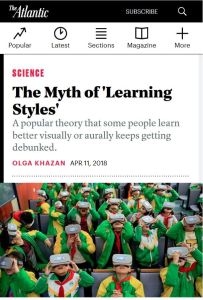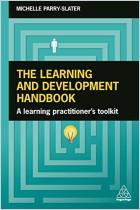
Article
The Myth of "Learning Styles"
A popular theory that some people learn better visually or aurally keeps getting debunked.
The Atlantic,
2018
Read or listen offline
Amazon Kindle
auto-generated audio
1×
Log in to listen to the audio summary.
auto-generated audio
Recommendation
If you came of age in the late 1980s or later, chances are that you’ve been told that you are one of four types of learners: “visual, auditory, reading” or “kinesthetic.” Yet as Olga Khazan reports in The Atlantic, recent studies don’t support the conclusion that students necessarily learn better by using their preferred style. Lifelong learners everywhere will find Khazan’s conclusions eye-opening.
Summary
About the Author
Olga Khazan is a staff writer at The Atlantic and covers health, gender and science.
By the same author
Book
Article






















Comment on this summary